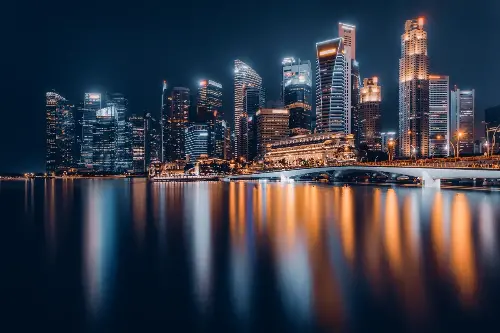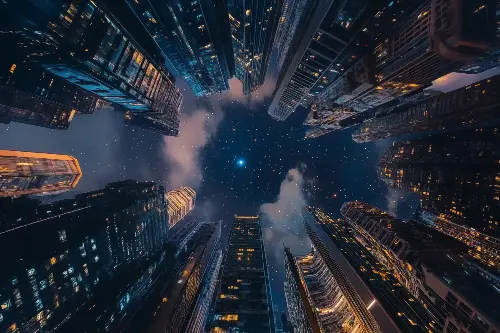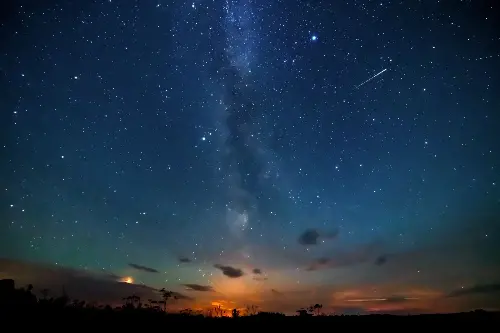When was the last time you looked up at the night sky and lost yourself in the sheer splendour of the stars? For many city dwellers, the experience of a star-studded sky has become a rare luxury. The culprit, largely unnoticed by the public, is light pollution, an escalating environmental concern that dims our view of the cosmos and disrupts ecosystems.

The Glimmer That Steals the Stars
Light pollution is the excessive, misdirected, or obtrusive artificial light that saturates our urban skies. Unlike other forms of environmental contamination, it's a phenomenon that happens at the speed of light – quite literally – every time a switch is flipped on. Streetlights, billboards, commercial properties, and homes contribute to a diffuse glow that obscures our view of the Milky Way and other celestial bodies.
This loss is not just aesthetic. Stargazing is an ancient tradition that has shaped our historical, cultural, and scientific heritage. The night sky inspired myths, guided navigators, and spurred scientific discoveries that shaped our understanding of the universe. By losing the stars above our cities, we lose touch with a fundamental part of our humanity.
An Illuminated Night and Its Ecological Repercussions
The impact of artificial light extends beyond our severed connection with the stars. It has profound ecological consequences, disrupting the natural behaviours of wildlife. Nocturnal animals, which use the cover of darkness as a cloak for hunting or protection, are particularly affected. Artificial light confuses these creatures and alters predation patterns, mating rituals, and migration routes.
Birds migrating at night often mistake illuminated buildings for celestial cues, leading to fatal building collisions. The hatchlings of sea turtles, which are guided by the natural horizon, become disoriented by beachfront lighting and struggle to find their way to the sea. Even plants are victims of light pollution, with extended daylight hours affecting photosynthesis and growth cycles.
The Human Cost: Beyond a Starless Sky
Humans, too, feel the unintended side effects of this luminescent haze. Our circadian rhythms, the internal clocks governing our sleep patterns and hormone production, rely on the natural cycle of day and night. Overexposure to artificial light at night has been linked to sleep disorders, increased stress, and other health issues including a higher risk for chronic conditions like obesity and depression.

A Cultural Heritage Fading Before Our Eyes
Astrophotography, night-sky tourism and star parties are just a few of the activities hampered by the pervasive glow. The opportunity to experience the awe-inspiring beauty of a clear night sky is not merely recreational – it connects us with the history of our species and the wonders of the cosmos. The tradition of telescopes peering into the heavens is under threat in many urban environments.
Scientists, too, are struggling with the ramifications. Observatories positioned close to urban centres are finding it increasingly challenging to conduct research. The faint light of distant galaxies and nebulae is masked by the bright sheen of cityscapes.
The Economic Angle: A Price Paid in Watts and Pence
It’s not just nature and culture paying the price for our overly lit lives; there’s a concrete economic cost too. Wasteful lighting burns through millions of kilowatt-hours of electricity annually, a significant portion of which is generated by non-renewable sources. The financial burden is twofold: We pay once for the energy consumed and again for the environmental impact.
Turning Down the Lights
The good news is that light pollution is reversible. The International Dark-Sky Association (IDA) and other organisations advocate for the use of properly shielded lights, lower-intensity bulbs, and lighting ordinances to reduce light trespass and skyglow. These adjustments not only make it possible to bring back the night sky to our cities but also lead to energy savings and a reduced carbon footprint.

Restoring the Celestial Canopy
Efforts to combat light pollution have seen various cities across the globe implementing changes. Notably, some have adopted 'dark sky preserves' where artificial light is heavily restricted, and the natural night environment is nurtured. These reserves often become hotspots for astrotourism, attracting stargazers and providing educational outreach about the importance of dark skies.
The movement has also sparked interest in smart lighting solutions, incorporating technology that adjusts intensity based on real-time needs, reducing wastage. Moreover, the focus on light pollution has also shone a light on the significance of preserving our night environment as a natural resource.
A Starry Prospect for Our Urban Night Skies
As we stand on the threshold of awareness, it's crucial to recognise the significance of dark skies and take collective responsibility for preserving them. In our pursuit of energy efficiency and sustainability, reflecting on how we light our cities is a must. By making informed choices about our use of artificial light, we can help to ensure that future generations will not be strangers to the astonishing beauty of the night sky.
The message is clear: it's up to us to rekindle our connection with the cosmos. Let’s embrace the dark, if only to see the lights above us shine all the brighter. After all, it's not every day one gets the chance to save the stars – and in doing so, we might just rediscover the wonders above our cities.
